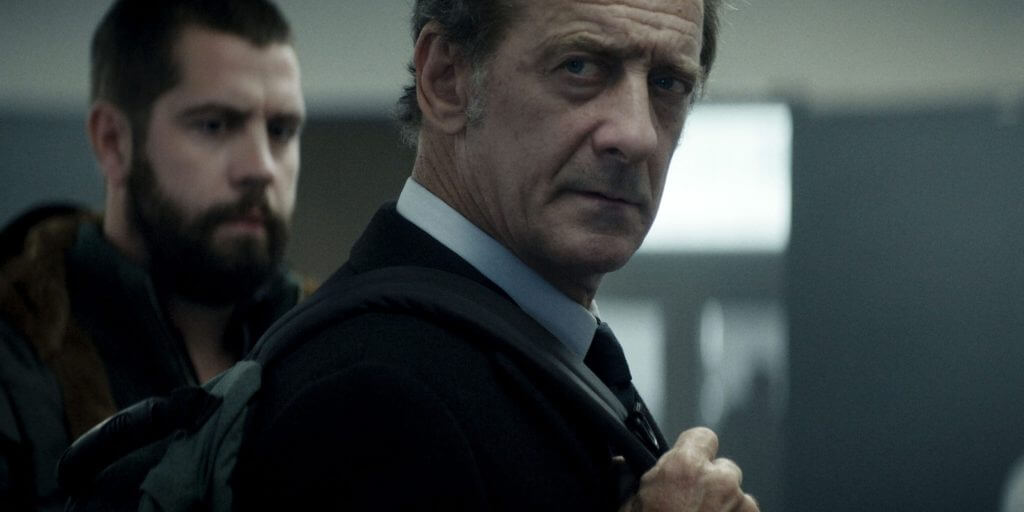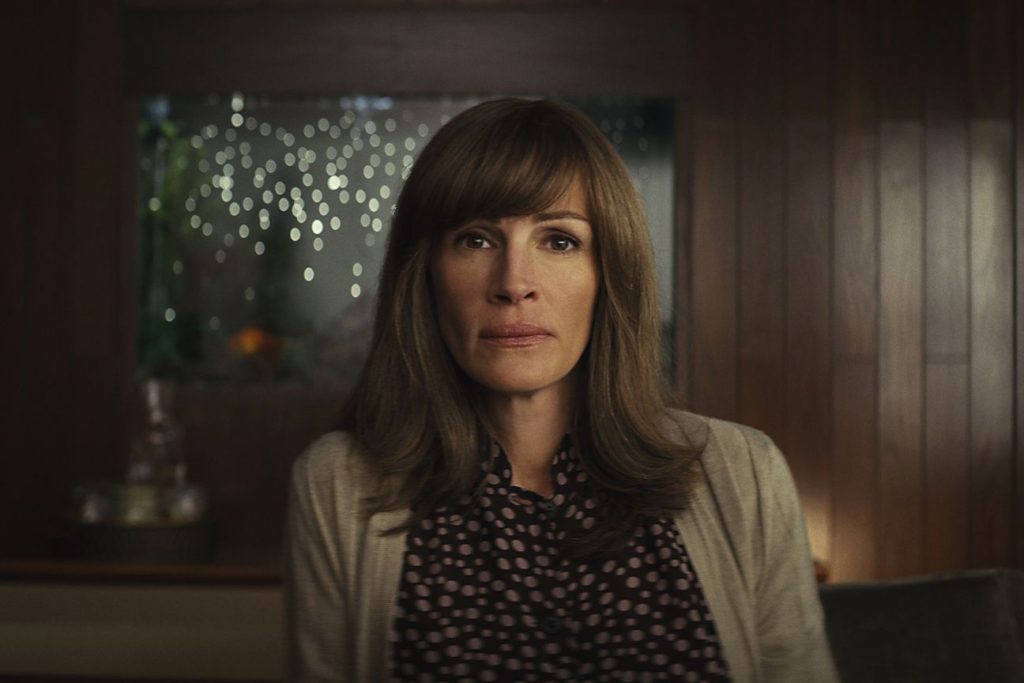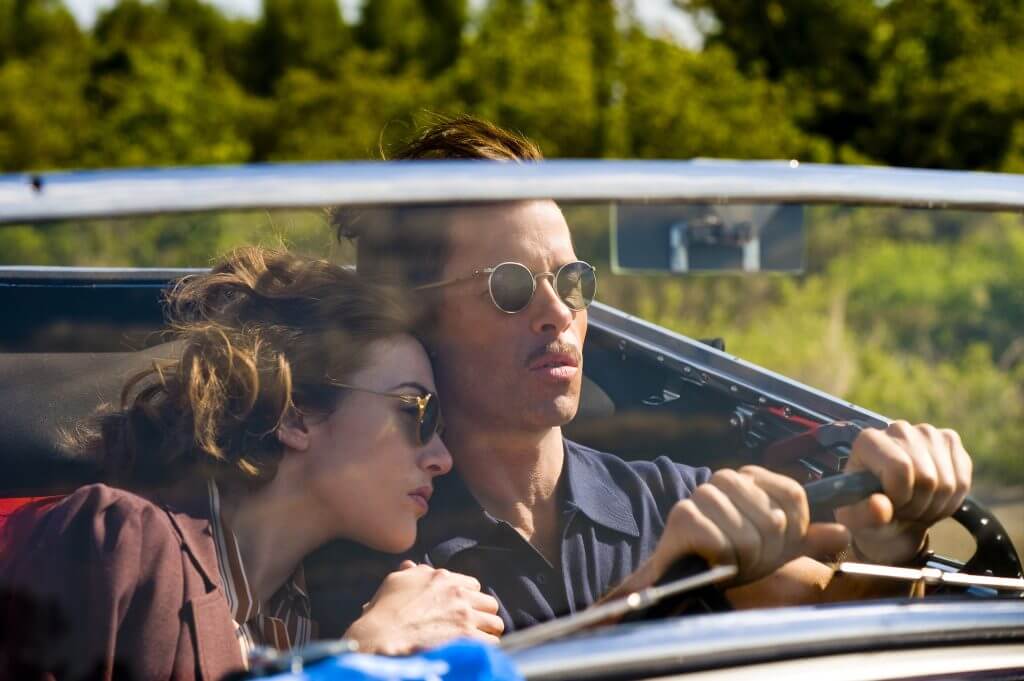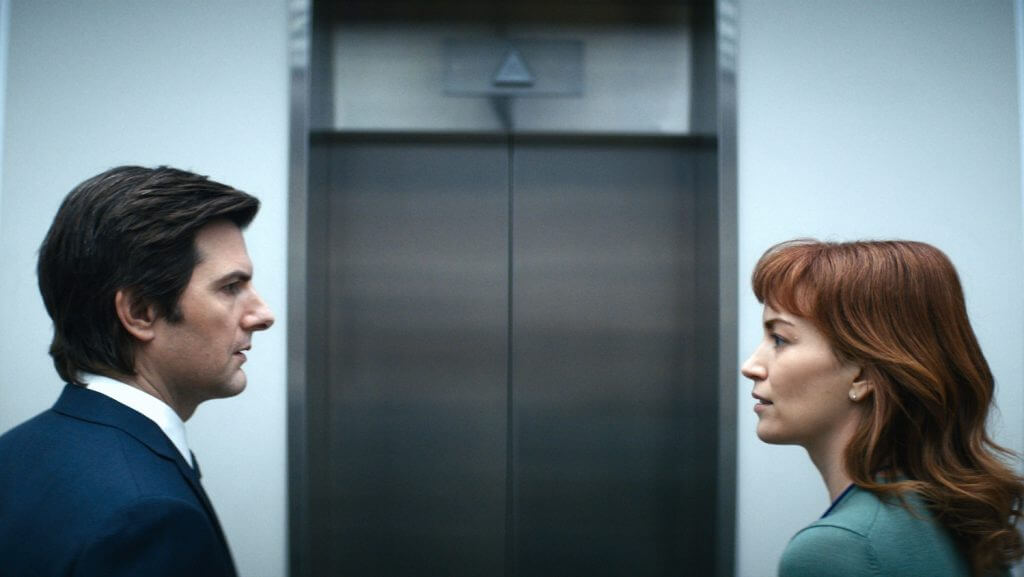4 DÉCEMBRE 2023
By Marion Miclet | @Marion_en_VO
The time has come to cancel the notion of cinema’s supposed superiority over television. The historical precedence of the big screen over the small screen didn’t halt the current TV series boom, but rather influenced it. Why not consider the similarities between these two forms of entertainment instead of pitting them against each other?
With their recent collaboration entitled D’argent et de sang, French director Xavier Giannoli and actor Vincent Lindon are both dipping their toes into the world of television for the first time. After premiering at the Venice Film Festival, the series went on to accumulate an online viewership ten times larger than the box office results for Illusions perdues–also directed by Giannoli–which earned the 2022 César for best film. The best of both worlds?

From Paris to Los Angeles, the cable and streaming boom that started 25 years ago revolutionized not only the quantity but, more significantly, the quality of the television output. Until then, the media industry was dominated by network-owned stations. Most of the TV series were sitcoms and procedurals, largely designed to fill the slots between commercial breaks and trigger an emotional response (such as surprise or fear) conducive to the audiences buying the advertised products. In order to sustain the pace of weekly episode release, TV producers became averse to creative risks (other than delivering addictive cliffhangers), especially since they were subjected to the restrictions of the television content rating system. The works that entered the television pantheon at the time did so because they were able to reach the realm of art in spite of their main commercial purpose. Cinema is equally torn between these opposite ends of the spectrum–art-house films mingling with endless superhero franchises.
But film and television storytelling have their own set of rules. In TV series, narrative arcs and characters’ storylines are developed for the long run, whereas movies deliver a finite, self- enclosed experience (unless sequels are already on the horizon). These fundamental differences do not mean that the two media cannot share common ground. On the contrary, their idiosyncrasies boost a healthy competition beneficial to viewers. So, who were the pioneers responsible for the current closer ties between cinema and television? And how does that enrich our audiovisual landscape?
When performers began to switch easily between film and television
Traditionally, there was one direction, and one direction only, to “make it” in Hollywood: graduating from TV series to movies. Sometimes, the emerging star’s filmography would shine so brightly that it would be enough to make us forget their humble television beginnings, as is the case for Leonardo DiCaprio (Growing Pains) and Michelle Williams (Dawson’s Creek). Sometimes, there is no escaping the television character that propelled an actor to fame. Dr Ross, the Fresh Prince of Bel Air and Sydney Bristow will always accompany George Clooney, Will Smith and Jennifer Garner, respectively, wherever they go. Some artists have made it their specialty to bounce back and forth between the two industries (Michael J. Fox, Don Cheadle, Aaron Sorkin…), but the highest form of recognition in the field of entertainment remains the golden statue at the Oscars or the Palme d’or at Cannes. However, a noticeable trend in recent years has been to “downgrade” from film to TV sets, proof that the standards of cultural influence have shifted. Prestige television, in particular, has become a major destination where big budgets and visionary showrunners come together to produce bold experimentations. Consequently, television is now a favorite playground for performers in search of professional and artistic challenges, including actresses who have made it clear that the film business is no longer offering them as many opportunities as it used to: Jane Fonda (Grace and Frankie), Reese Witherspoon, Nicole Kidman and Meryl Streep (Big Little Lies), Julia Roberts (Homecoming, Gaslit) and Natalie Portman with the upcoming (Lady in the Lake).

In France, it used to be even more arduous to cross over from television to cinema. The TV series Call my agent–which irreverently depicts what happens behind the scenes of the film industry–is the most stellar example of the abolition of the inferiority complex that has plagued the small screen for so long. Not only did the show cast the crème de la crème of French cinema in supportive parts, but the actors who portray the agent characters have become international
stars in their own right. Nobody bats an eye when Camille Cottin (who started her career as La Connasse) appears alongside Matt Damon in the movie Stillwater. And it makes total sense that acclaimed actress Juliette Binoche, on the heels of guest-starring in Call my agent, decided to expand her television repertoire with unforgettable roles in The Staircase and The New Look. More and more artists and creators are taking the plunge. Xavier Dolan (The Night Logan Woke Up) and Cédric Klapisch (who directed a few episodes of Call my Agent and recently released his first show, Salade grecque) have both elected to work for the small screen, citing an affinity for episodic writing and the desire to explore a different type of storytelling. What was once a narrow and dangerous path has transformed into a congested highway. And we have one trailblazer to recognize for this in particular: the American cable channel HBO.
IT’S NOT TV, IT’S HBO
In the 1980s, HBO decided to shift some of its editorial and financial priorities towards the limited series (or mini-series). This hybrid concept between film and television allows for more flexibility in terms of form and content, without monopolizing the spectators’ time. And HBO being a subscription-based channel, they do not rely on advertisers for revenue and are not subjected to content restrictions. Henceforth, they are able to dedicate large budgets to projects they believe in. The result? Talent comes running. Several HBO mini-series are now a part of television history: Band of Brothers (2001), produced by Tom Hanks and Steven Spielberg; Angels in America (2003), directed by Mike Nichols starring Meryl Streep, Emma Thompson and Al Pacino; and Mildred Pierce, created by Todd Haynes for Kate Winslet (fresh from her Oscar win). In 2014, True Detective marked HBO’s initial foray into the anthology format. The
first season, starring Matthew McConaughey (post-Oscar, as well) and Woody Harrelson, was tremendously successful. With the original catchphrase “It’s not TV. It’s HBO.”, the channel introduced the idea of the end of the divide between cinema and television. HBO adopted the same philosophy when it came to producing multiple-season series. In this regard, Six Feet Under remains a groundbreaking show (and, you guessed it, the showrunner Alan Ball was a
recent Academy Award winner at the time).

This cult TV series (currently being rediscovered on Netflix by a new generation of viewers) contributed to the launch of the early 2000s golden age of television, alongside The Sopranos, Mad Men, Breaking Bad… An era which was consequently replaced by “Peak TV” and the preeminence of streaming platforms. These companies, having observed how HBO was able to attract top tier talent thanks to a revolutionary business model, also positioned themselves as a
hub for creative freedom. As early as 2013, Netflix’s coCEO Ted Sarandos admitted: “The goal is to become HBO faster than HBO can become us.” And, so far, the streamer has already collaborated with Kevin Spacey, Winona Ryder, Ava DuVernay, Baz Luhrmann, Tim Burton, Spike Lee… With their distinctive styles, these artists have contributed to closing the chapter of soulless commercial TV content for good.
EXPÉRIMENTATIONS VISUELLES
As of today, TV series (on cable, networks or streaming) have officially achieved the versatility of movies. Let’s remember however a few shows that were precursors in displaying a cinematic ambition: David Lynch’s Twin Peaks; ER, which was produced by Steven Spielberg (see the use of Steadicam technology and the episode directed by Quentin Tarantino); and Lost. Since then, numerous iconoclastic directors have added the title of showrunner to their name : Steven Soderbergh (The Knick), David Fincher (House of Cards, Mindhunter), Martin Scorsese (Boardwalk Empire, Vinyl), Paolo Sorrentino (The Young Pope), Jane Campion (Top of the Lake) or Steve McQueen (Small Axe). Thanks to them, a new level of visual complexity and grandeur is now gracing our small screens. The pushing of boundaries also happens on an intimate scale. For instance, The Handmaid’s Tale, Mr. Robot, Servant, Severance and The Bear are all claustrophobic shows that brilliantly reinvent the trope of the enclosed space setting, whether the entrapment be physical, mental or social.

One might say that the way we consume films versus television–going to the cinema or staying at home–is the last tangible element separating the two forms of entertainment. But that has changed as well! A considerable amount of movies, especially when they are produced by streaming platforms, never make it to the big screen. Conversely, more and more TV series are so aesthetically impressive, it’s almost a crime to consume them on a laptop, or worse a cellphone. Thankfully, several international film and TV series festivals now regularly organize screenings of buzz-worthy shows on the big screen, where they belong. Deciding where to allocate our time as viewers is no longer a matter of high brow (cinema) versus low brow (television) content consumption. That hierarchy simply does not make sense anymore because we have more choice and more quality than ever. That being said, nothing can replace the collective and immersive thrill of catching the latest release at your local independent movie theater or chain multiplex (popcorn not optional). As for TV series, with every new episode and season comes an opportunity for rediscovery and for a strengthening of the ties that bind us to the characters. So, in the end, it doesn’t matter if you favor film over TV or vice versa, because the enjoyment you derive from them is unique to the work itself, not the medium.
WHERE AND WHEN THE SHOW SEX EDUCATION TAKES PLACE, EXACTLY ?
WHERE AND WHEN THE SHOW SEX EDUCATION TAKES PLACE, EXACTLY ?
All the Light we Cannot See filmée à Saint-Malo, Transatlantic à Marseille, The Walking Dead: Daryl Dixon et, bien sûr, Emily in Paris dans la capitale… Comment la France attire-t-elle les séries du monde entier ?